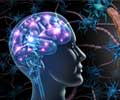- CRISPR gene editing tool is widely being used in studies involving genetic diseases
- This is the first time this gene editing tool has been used on a neurodegenerative disorder
- The symptoms of Huntington’s disease were reversed on shutting off the huntingtin gene
The study showed a path for treating people with Huntington’s disease, along with other similar neurodegenerative diseases. Dr. Xiao-Jiang Li, who was the senior author of the study, said that further testing was required to understand the long-term effects of using the CRISPR/Cas9 system to treat Huntington’s disease.
Huntington’s Disease:
This disease is caused by a mutation that occurs in the Huntington gene, which codes for the Huntington protein. The mutant variant of the gene is found to contain additional poly-glutamine (CAG) repeats, which results in post translational modifications, leading to a gain of function that is toxic.
The symptoms of this condition usually occur during mid-life and are associated with movements that are uncontrolled, along with problems of balance, changes in mood and cognitive decline. The patients normally find it hard to carry out daily tasks and the life span of the individual after the onset of symptoms is 10 years.
CRISPR for Neurodegenerative Diseases
CRISPR/Cas9 system is extremely popular as a gene editing tool and has been recently used to treat sickle cell anemia and other genetic disorders. However, this is the first time that this tool is being used for a neurodegenerative disease.
There are certain considerations that need to be taken into account, like the safety of altering genes and the risk of unwanted mutations. In the year 2012, zinc finger nucleases, another gene editing tool, was used as a gene therapy based approach for Huntington’s disease.
The human mutant huntingtin gene was used to replace the mouse huntingtin gene in mice. Such mice began to develop symptoms of Huntington’s disease at around nine months, like motor problems and aggregation of the mutant huntingtin.
The CRISPR/Cas9 gene editing system was developed to include guide sequences that targeted the mutant variant of the huntingtin gene as well as the normal copy. This makes it more generic and would not require personalization to a specific patient’s genome, and so can be used on all patients’ with Huntington’s disease.
Shutting Off The Huntington Gene:
Certain genes code for specific hormones or proteins that are essential for various metabolic processes in the body. However, earlier studies by the research team from The Emory University had shown that mice which were older than four months did not need the huntingtin gene to survive. This meant that when this gene was shut off or silenced in adult mice, the mice would still be able to survive.
The benefits of shutting off the huntingtin gene prompted the start of clinical trials, but these trials require frequent administration of drugs that silence the gene. However, in a treatment methodology that involves the use of a gene editing tool, the treatment would be more durable if the methodology targets the right number of cells.
An adenovirus was used as a vehicle for gene therapy to guide the CRISPR/Cas9system into the brain cells. These viral vectors, carrying the CRISPR/Cas9 enzymes, were injected into the striatum region of the brains of mice that had Huntington's disease, at the age of nine months. The striatum region of the brain was targeted as this region was responsible for the movement of the body and motor function.
The study findings were:
- Significant reduction in the amount of the aggregated mutant huntingtin protein within a period of three weeks.
- The ability of the brain to heal once the gene was silenced was evidenced from the study.
- Significant improvement in motor skills like balance and hand grip strength, though their motor movements did not prove to be as good as that of control mice.
- Non target mutations occurred within the huntingtin gene and did not affect other genes, addressing safety concerns associated with frame shift mutations.
References:
- What Is Huntington’s Disease? - (http://hdsa.org/what-is-hd/)
- CRISPR/Cas9-mediated gene editing ameliorates neurotoxicity in mouse model of Huntington’s disease - (https://www.jci.org/articles/view/92087)












